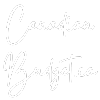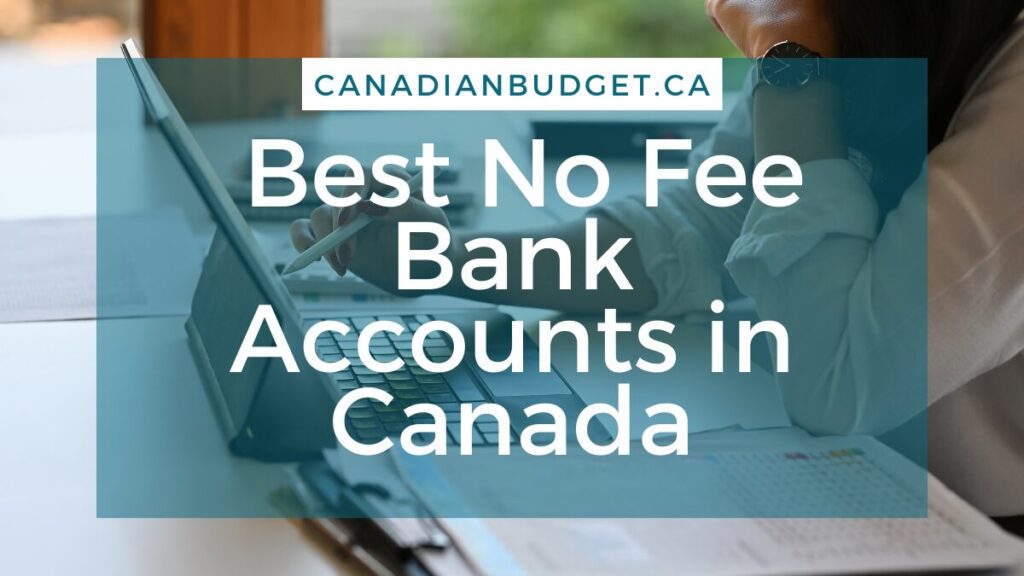When it comes to banking, nobody likes to pay unnecessary fees. That’s why finding a no-fee bank account in Canada can make a big difference in your financial journey. We explore the best no fee bank accounts available for cost-effective banking this year.
Whether you’re a student, a freelancer, or simply looking to minimize expenses, a no-fee bank account can help you save money in the long run. We will compare top financial institutions and dig into their features, such as debit card perks, online banking capabilities, and ATM accessibility.
Say goodbye to hidden fees and unnecessary charges and take control of your finances with a no fee banking solution.
Benefits of using no fee bank accounts in Canada
Table of Contents
ToggleNo fee bank accounts offer numerous benefits for consumers. Firstly, they eliminate the need to worry about monthly maintenance fees, which can quickly add up over time. You can keep more of your hard-earned money in your pocket by choosing a no-fee bank account.
No fee bank accounts often come with other perks, such as free debit card transactions and unlimited electronic transfers. This can be particularly beneficial for individuals who frequently use their debit cards for purchases or need to transfer funds between accounts. Some institutions also offer prepaid credit cards linked to your account.
No fee bank accounts typically don’t require a minimum balance, and provide peace of mind because you won’t have to constantly monitor your account for unexpected fees or worry about being charged for services you didn’t use. With no fee banking in Canada, you can focus on managing your finances without any unnecessary stress.
A comparison of different free bank accounts in Canada
When it comes to choosing a no fee bank account, there are several options available in Canada. Some institutions offer full chequing and savings accounts, and some provide savings only.
Let’s compare some of the top contenders among no fee bank accounts in Canada and compare their features and benefits.

Wealthsimple
Wealthsimple offers their Cash Account – which is a no fee bank account closest to a mix of a chequing and a high-interest savings account. They provide a prepaid Mastercard that uses your account balance as the limit and earns you 1% cashback. This account has become a full chequing account. You can use any ATM that takes Mastercard to withdraw cash. They do not charge any ATM fees, but the ATM provider you use may.
The no fee chequing account provides a competitive 1.75% – 2.75% everyday rate, which can even go up if you meet specific criteria. Get an extra 0.5% for setting up a direct deposit and an additional 0.5% if you have 100k across your Wealthsimple accounts.
Wealthsimple’s main core business is investing, and they offer both Robo advisor services through their Managed Investing accounts and DIY no commission investing through their self-directed accounts.
Account Options:
Cash, Save, Managed Investing & Self Directed Investing Accounts (RRSP, TFSA, RESP Spousal RRSP, Non-Registered, LIRA, FHSA, Corporate, RRIF), Crypto Investing.
Open any Wealth simple account and deposit any amount using our link- Get a $25 bonus into a self-directed investment account.
Pros
- High everyday interest rates (2.75-3.75%+)
- Easy ability to transfer funds to investment accounts
- Great Mobile User Experience
- Quick to increase rates as interest rates rise.
Cons
- Beginning to pitch riskier investments to beginner investors
- Not a full chequing account (but cheques are in the works)
Innovation Federal Credit Union
Innovation Federal Credit Union’s No-Fee Chequing Account is another option to consider. Their chequing account has no monthly fees and no minimum balance or minimum deposit requirements, making it accessible to everyone.
As a credit union member, you become part owner and receive quarterly dividends. Account holders are assigned to a specific member advisor to help with their financial needs. They also offer live chat support for convenient assistance and have a top rated mobile app to manage your account. Innovation Federal Credit Union’s No-Fee Bank Account is available across Canada (except Quebec). They have a network of ATMs accessible through various credit unions and financial institutions.
Pros
- No Monthly Fees
- Unlimited Transactions
- Free E transfers
- Selected Free ATM's across Canada
- Monthly rewards and dividends
Cons
- Not available in Quebec
- ATM availability may be less frequent depending on your location
Tangerine
Tangerine began operating in Canada in 1997 under the name ING Direct and was acquired by Scotia Bank. Tangerine offers no fee bank accounts with a variety of attractive features.
They provide a more traditional Chequing account so accountholders can get a chequebook if needed. They also offer free unlimited debit transactions, making it an ideal choice for individuals who frequently use their debit cards for everyday purchases.
In addition, Tangerine offers a user-friendly online banking platform, allowing you to manage your finances easily from the comfort of your home. Access your money through any Scotiabank ATM with no fees.
They offer a variety of accounts, provide investment opportunities, and pay interest on their chequing account!
I have personally used Tangerine as my main chequing account for about 12 years now and have no regrets.
Accounts & Investment Options:
Chequing, savings, joint accounts, RRSP, TFSA, GICs, Mutual Funds, ETF Portfolios, Credit Cards
Pros
- Full Chequing Account with Cheques
- Pays Interest on Chequing
- Mobile Cheque Deposit
- Free ATM access through any Scotiabank ATM
- Can have multiple savings accounts for different goals
Cons
- Low everyday interest rates outside of promotions
- Limited Investing Options
Neo Financial
Neo Financial is an excellent option for your no-fee banking in Canada. Neo’s two main savings accounts are the Neo Savings Account which earns 2.9% interest, and the Neo Money Every Day account, which earns 0.10% interest and comes with a free Neo Money card that earns cashback on your purchases. Neo does not offer chequebooks for its accounts.
The Neo Savings account offers a 2.9% non-promotional everyday rate. Neo has always been quick to increase its rates, which makes it a great HISA option. You know you will always be getting a great rate.
They also offer several no-fee card options:
– Neo Money Everyday account + card – no annual fee, 0.10% interest on your balance + cashback
– Neo Credit card – no annual fee + cashback. Sign up here + $25 Signup Bonus
– Neo Secured Credit card – Get started with as little as $50, help safely build your credit score for a $5 Monthly fee. Sign up Here + $25 Signup Bonus
Product Options:
Neo Money account, Neo Savings account, Neo Credit, Neo Secured Card, and Investing options via Onevest, Neo Mortgage, Personal Loans, and Insurance.
Pros
- The high everyday interest rate on their Savings Account (2.9%)
- No fee cashback cards with Neo Credit, Neo Money & Neo Secured Credit
- Great Mobile User Experience
- No monthly or annual fees on any products
- Can open up to 10 individual HISA Accounts
Cons
- No Mobile Cheque Deposit (Might be coming soon)
- Limited Investing Options
- Not a Full Chequing Account
Koho offers saving and spending accounts. The Koho Card that comes with your account is a prepaid card you load your funds on to use.
On the ‘Essential’ plan, Koho offers 2% interest on your balance, 1% cash back, unlimited transfers, virtual and physical credit card linked to your account.
You can use the app’s budgeting features to allocate money to spending or saving and load your prepaid card with the spending money to keep on budget. One of the features that can help Canadians save more is their roundup feature which rounds up purchases and saves the difference.
As far as I could find, Koho does not offer a mobile cheque deposit feature like many of the others, nor do you have access to cheques for your account.
Koho offers different levels of accounts: The base-level account called Essential usually runs for $4 a month. However, the fee is waived if you set up direct deposit or deposit more than $1000 a month. Additional tiers of accounts are Extra $9/Mo, and Everything $19/Mo. Additional services and features are added on with the paid tiers.
Koho’s Extra Plan offers 2.5% interest, while the Everything Plan offers 3.5% interest.
New KOHO users get a $20 bonus + 30 days of free trial for any account.
Account Options: Saving & Spending Account with linked Prepaid Mastercard.
Pros
- 2% - 3.5% interest on your balance
- 1% cashback on spending
- Option to add on credit building feature for a fee
- Budgeting tools built into the app
- Ability to separate savings & Spending Money
Cons
- No Mobile Cheque Deposit
- Not able to have multiple savings accounts for different goals

EQ Bank
EQ Bank’s primary offering is its Personal Account, which is tied to a reloadable Mastercard, similar to PC Money. You cannot get a chequebook for this account, but you can issue a void cheque from the account if you need it to set up any direct deposits.
EQ Bank has been known to provide a reasonable interest rate for your savings (up to 3.50%). And has typically been among the quickest to increase their rates as interest rates have risen. The base interest rate is 1.00%, and you can raise that to 3.00% if you set up a paycheque direct deposit.
EQ Bank has no physical locations or ATMs, but they offer free ATM access anywhere in Canada with your EQ Bank Mastercard.
If you have a cheque you need to deposit, they have mobile cheque deposit capabilities. You can deposit and withdraw money through Interac E transfer from a linked account, using an ATM with your EQ Bank Mastercard (for withdrawals), or completing an Electronic Funds Transfer.
EQ Bank allows members to open up to 5 personal accounts in addition to their TFSA and RSP, enabling users to create different savings buckets for each of their savings goals.
Account Options:
Personal Account, Joint Account, USD account, First Home Savings Account, RSP, Tax-Free Savings Account, GIC’s
Pros
- Good Interest rates (1.00% - 3.00%)
- Keep up to 5 savings accounts for different goals
- Mobile Cheque Deposit
Cons
- No ATM's for Deposit - but can use for withdrawal
- Investing Options Limited
Simplii Financial
If you are looking for a no fee chequing account, Simplii Financial’s no fee bank account is also an excellent option. You can grow your savings while enjoying the benefits of a no fee chequing account.
They also offer a vast network of ATMs through CIBC, their parent company, ensuring easy access to your funds wherever you go.
You can get a chequebook if needed for your account. The Simplii chequing account pays 0.01% interest for up to 50k balance, and increases with higher balances. Although it is great to get a tiny bit of interest, you should definitely be keeping excess cash you have for short-term savings in a High Interest Saving Account.
Simplii also offers a High Interest Savings Account with a 3.7% promotional rate for a 7 month term (regular rate is 0.3%).
Accounts & Investment Options:
Chequing, High Interest Savings, USD & Foreign Currency Savings Accounts, credit cards, Mortgages, RRSP, TFSA, Non-registered investing accounts, Lines of credit & Loans.
Pros
- Full Chequing Account with Cheques
- Pays Interest on Chequing
- Easy ATM Access through CIBC
Cons
- Low everyday Interest rates outside of promotions
- Limited Investing Options
PC Financial
PC Financial offers a Money Account – this is not your traditional chequing account, you cannot get cheques. However, they offer a no fee account with a linked prepaid MasterCard. So you can use the card anywhere MasterCard is accepted. You can earn PC Optimum points for savings and spending with this account.
They offer free unlimited transactions, No minimum balance, and Free Interac transfers. PC ATM access is available at most Loblaw and No Frills brand grocery stores. They offer 24/7 online support for their customers, as well as fraud detection and online money management tools.
Although it is not a traditional chequing account, it could be a good option if you have locations with ATMs near your location.
Account Options:
PC Money Account, PC no fee Mastercard, PC World Elite Mastercard
Pros
- Earn PC Optimum points for FREE Groceries
- No Fee Credit Card Option
- 24/7 Online Customer Support
Cons
- Low everyday Interest rates outside of promotions
- Must have access to Loblaws brand stores for ATM Access

Motive Financial is affiliated with Canadian Western Bank.Their debit cards can be used without fee at any ATM in THE EXCHANGE® Network.
They offer the Motive Savvy Savings® Account which offers 2% interest. Deposits are unlimited, but the account only includes 2 monthly withdrawals, after which they charge $5 per transaction. Interac e-transfers are also charged at $1 each in the savings account.
Account Options:
Savvy Savings Account
Open an account with Motive Financial here.
Pros
- Full Chequing Account with Cheques
- Pays Interest on Chequing
- Mobile Cheque Deposit
- Easy ATM access through The Exchange Network
Cons
- Some fees associated with Savings Account's over minimal transactions
- Limited transactions before fees are charged

Features to consider when choosing a no fee bank account in Canada
When evaluating different no fee bank accounts, assessing the features that matter most to you is essential. Here are some key factors to keep in mind.
Card Perks
Some no fee bank accounts offer additional perks with their debit cards, such as cashback rewards or discounts at partner merchants. If you frequently use your debit card for purchases, these perks can add up and provide extra value. Some banks don’t offer debit cards but prepaid & reloadable Mastercards, which are funded by your account balance.
Online & Mobile Banking Capabilities
The convenience of online banking cannot be overstated. Most of these banks are 100% digital, so their website and app experience needs to be excellent.
Look for a free bank account in Canada that offers a robust online banking platform and an easy-to-use app, allowing you to quickly check your balance, make transfers, and pay bills from anywhere at any time.
ATM Accessibility
Consider the availability of ATMs in your area and whether your chosen bank has a vast network of ATMs. Easy access to in-network ATMs can save you from potential fees associated with out-of-network machines.
Customer Support
Good customer support can make all the difference when encountering issues or having questions about your account. Look for a bank that offers reliable customer support through multiple channels, such as phone, email, or live chat with extended hours.
Mobile cheque deposit capability
Depositing a cheque by taking a picture of it is one of the best advancements in banking. Not everyone offers this capability, so check if your bank provides it, and if not, make sure you know how to deposit a cheque if you receive one.
Easy and unlimited E-transfers
With fully digital banks, one would hope they provide unlimited E-transfers to make life simpler. If your bank doesn’t offer unlimited, always check the terms of the account agreements to ensure you aren’t dinged with any charges if you exceed the allotted amount.
Availability of Physical cheques
If you need this feature, there are a few on the list that do provide physical cheques. So double-check before opening an account if this is important for you.
How to switch to a no fee bank account
Switching to a no fee bank account is easier than you might think. Follow these steps to make a seamless transition:
- Choose Your New Bank: Research different no fee bank account options and select the one that suits your needs.
- Open the Account: Visit the bank’s website or branch to open your new account. Ensure that you have all the necessary documentation.
- Transfer Your Funds: Transfer your funds from your old bank account to your new no fee account. You can do this online or by visiting the bank’s branch.
- Update Your Automatic Payments and Deposits: Inform your employer, service providers, and any other parties who make automatic deposits or payments to your account about your new bank details.
- Close Your Old Account: Once all your funds and automatic payments are transferred, close your old bank account. This can typically be done online or by visiting the branch.
Note: You do not have to close your old bank account if you don’t want to – many people use these options in addition to their everyday bank – for instance if they are looking for a high-interest savings account to add on – they may maintain their regular chequing account.
You could also use these accounts in combination—EG Tangerine for Chequing, Neo for HISA, or any other combination that works for you.
Common misconceptions about no fee bank accounts
There are some common misconceptions about no fee bank accounts that need to be addressed:
Limited Services
Contrary to popular belief, no-fee bank accounts often offer a wide range of services comparable to traditional ones. They may include online banking, mobile banking, credit cards, lending, mortgages, investing, e-transfers, and even access to a network of ATMs.
Hidden Fees
While the main selling point of a no fee bank account is the absence of monthly fees, it’s still important to read the terms and conditions carefully. Some banks may charge fees for additional services or transactions not covered by the base account.
Lower Quality Service
No fee bank accounts provided by reputable financial institutions offer the same level of service and security as traditional fee-based accounts. The only difference is the absence of monthly fees. You might even experience a higher level of service than your traditional brick-and-mortar bank account due to the competition to gain your business.
Frequently asked questions about no fee bank accounts in Canada.
Are no fee bank accounts really free?
Yes, no fee bank accounts do not charge monthly maintenance fees. Many even pay you interest on your balances. However, additional fees may apply for services or transactions not covered by the base account, depending on your institution.
Can I have multiple no fee bank accounts?
Yes, you can have multiple no fee bank accounts with different banks. However, keeping track of each account’s terms and conditions is important to avoid unexpected fees. For instance, Neo allows up to 10 accounts, while EQ provides up to 5. This lets you separate your savings goals into different accounts to track your progression toward your financial goals more easily.
Can I earn interest with a no fee bank account?
Some no fee bank accounts offer competitive interest rates, allowing you to earn interest on your savings. However, the rates may not be as high as those specialized savings accounts offer.
Can I use my debit card abroad with a no fee bank account?
Most no fee bank accounts offer the option to use your debit card abroad. However, foreign transaction fees may still apply, so checking with your bank before travelling is best. Some banks offering prepaid Mastercards also offer no FX fees on the cards.
Do I have to pay tax on the interest I earn?
Yes, You do. You will get a tax slip if the interest you earn is over $50. Your bank will issue you a T5 Form (statement of investment income) each year at tax time. Please don’t let this deter you from opening a high-interest savings account. It is always better to earn more (even if you only keep a portion of it); you are still coming out ahead.
Conclusion and final thoughts
With so many great no fee account options, it seems silly to pay bank fees these days! Whether you are looking for a no fees chequing account in Canada, a no-fee High-interest savings account, or something in between, this list of the country’s top 9 best no-fee bank accounts will help you choose the right one.
Read more from the blog...

Do You Need an Accountant…
Guest Post by Karan Sachdeva of MultiTaxServices Doing taxes in Canada Money management often feels like one of those “I’ll...
Read More
Why Wealthsimple Could Be the…
Wealthsimple Banking Review 2025: Best No-Fee Bank in Canada
Read More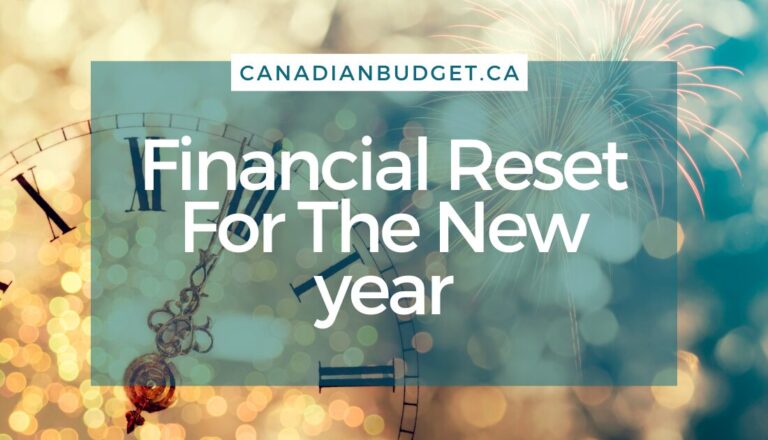
Financial Reset For The New…
How to Do a Financial Reset for the New YearAs the new year begins, it's the perfect time to take...
Read More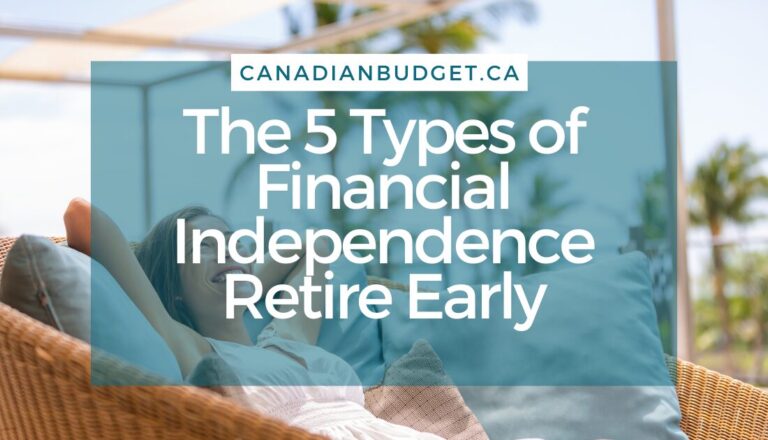
The 5 Types of Financial…
Starting your journey towards Financial Independence Retire Early (FI/RE) in Canada opens up possibilities for those eager to take control...
Read More
In a Public Sector role?…
Public sector roles, including those in schools and hospitals, make up approximately 21% of employment in Canada. That includes teachers...
Read More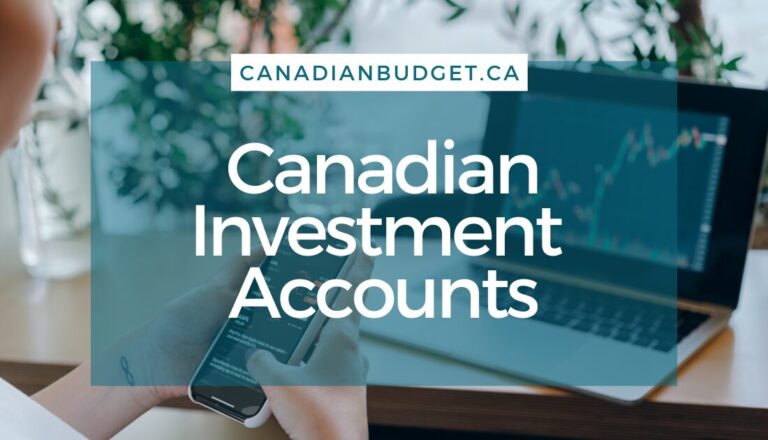
8 Canadian Investment Accounts To…
If you are new to investing, you might be wondering what the Canadian investment accounts are available, and which is...
Read More
What Are Canadian Real Estate…
Canadian Real Estate Investment Trusts: What They Are and Should You Invest? Canadians have heard owning property was the path...
Read More
6 Ways Fixing Credit Scores…
Struggling with debt can significantly impact your financial well-being, especially if your credit score suffers. Fixing credit scores is important...
Read More
The Paying Yourself First Method
Taking control of your financial future starts with a simple yet powerful concept: paying yourself first. Shifting your money mindset...
Read More
How to Calculate Retirement Savings…
When is a good time to calculate retirement savings needs? When retirement may be decades away it’s hard to think...
Read MoreAbout The Author
Jessica Morgan
Jessica Morgan is the founder and CEO of Canadianbudget.ca. She is passionate about personal finance and helping Canadians improve their financial literacy by providing more Canadian focused financial content. A millennial mom of one, she has a burning obsession with all things personal finance.
Jessica has a BA in East Asian Studies from York University and a Masters in Business Administration from Toronto Metropolitan University. She is a career public sector employee with a Hybrid Pension, and an advocate for Canadian women to improve their personal finance knowledge.
